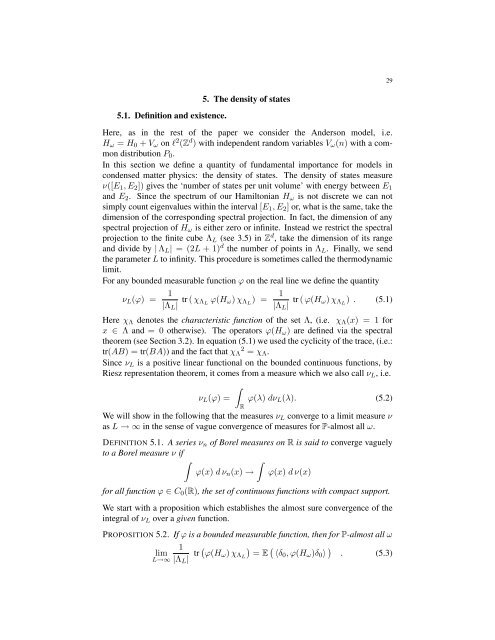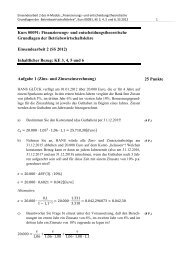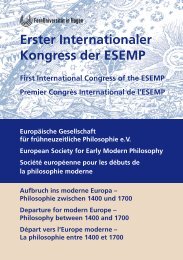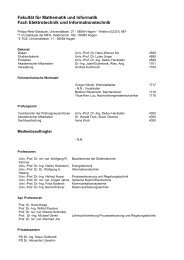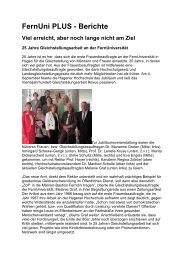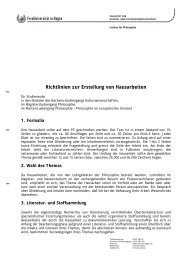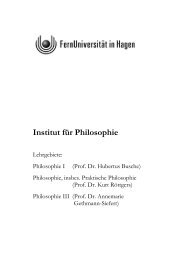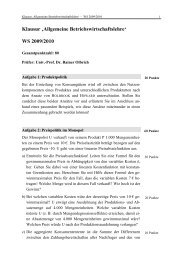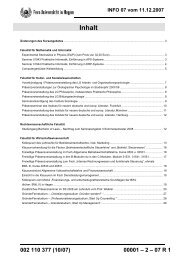An Invitation to Random Schr¨odinger operators - FernUniversität in ...
An Invitation to Random Schr¨odinger operators - FernUniversität in ...
An Invitation to Random Schr¨odinger operators - FernUniversität in ...
You also want an ePaper? Increase the reach of your titles
YUMPU automatically turns print PDFs into web optimized ePapers that Google loves.
29<br />
5.1. Def<strong>in</strong>ition and existence.<br />
5. The density of states<br />
Here, as <strong>in</strong> the rest of the paper we consider the <strong>An</strong>derson model, i.e.<br />
H ω = H 0 + V ω on l 2 (Z d ) with <strong>in</strong>dependent random variables V ω (n) with a common<br />
distribution P 0 .<br />
In this section we def<strong>in</strong>e a quantity of fundamental importance for models <strong>in</strong><br />
condensed matter physics: the density of states. The density of states measure<br />
ν([E 1 , E 2 ]) gives the ‘number of states per unit volume’ with energy between E 1<br />
and E 2 . S<strong>in</strong>ce the spectrum of our Hamil<strong>to</strong>nian H ω is not discrete we can not<br />
simply count eigenvalues with<strong>in</strong> the <strong>in</strong>terval [E 1 , E 2 ] or, what is the same, take the<br />
dimension of the correspond<strong>in</strong>g spectral projection. In fact, the dimension of any<br />
spectral projection of H ω is either zero or <strong>in</strong>f<strong>in</strong>ite. Instead we restrict the spectral<br />
projection <strong>to</strong> the f<strong>in</strong>ite cube Λ L (see 3.5) <strong>in</strong> Z d , take the dimension of its range<br />
and divide by | Λ L | = (2L + 1) d the number of po<strong>in</strong>ts <strong>in</strong> Λ L . F<strong>in</strong>ally, we send<br />
the parameter L <strong>to</strong> <strong>in</strong>f<strong>in</strong>ity. This procedure is sometimes called the thermodynamic<br />
limit.<br />
For any bounded measurable function ϕ on the real l<strong>in</strong>e we def<strong>in</strong>e the quantity<br />
ν L (ϕ) = 1<br />
|Λ L | tr ( χ Λ L<br />
ϕ(H ω ) χ ΛL ) = 1<br />
|Λ L | tr ( ϕ(H ω) χ ΛL ) . (5.1)<br />
Here χ Λ denotes the characteristic function of the set Λ, (i.e. χ Λ (x) = 1 for<br />
x ∈ Λ and = 0 otherwise). The opera<strong>to</strong>rs ϕ(H ω ) are def<strong>in</strong>ed via the spectral<br />
theorem (see Section 3.2). In equation (5.1) we used the cyclicity of the trace, (i.e.:<br />
tr(AB) = tr(BA)) and the fact that χ 2 Λ = χ Λ .<br />
S<strong>in</strong>ce ν L is a positive l<strong>in</strong>ear functional on the bounded cont<strong>in</strong>uous functions, by<br />
Riesz representation theorem, it comes from a measure which we also call ν L , i.e.<br />
∫<br />
ν L (ϕ) = ϕ(λ) dν L (λ). (5.2)<br />
R<br />
We will show <strong>in</strong> the follow<strong>in</strong>g that the measures ν L converge <strong>to</strong> a limit measure ν<br />
as L → ∞ <strong>in</strong> the sense of vague convergence of measures for P-almost all ω.<br />
DEFINITION 5.1. A series ν n of Borel measures on R is said <strong>to</strong> converge vaguely<br />
<strong>to</strong> a Borel measure ν if ∫<br />
∫<br />
ϕ(x) d ν n (x) →<br />
ϕ(x) d ν(x)<br />
for all function ϕ ∈ C 0 (R), the set of cont<strong>in</strong>uous functions with compact support.<br />
We start with a proposition which establishes the almost sure convergence of the<br />
<strong>in</strong>tegral of ν L over a given function.<br />
PROPOSITION 5.2. If ϕ is a bounded measurable function, then for P-almost all ω<br />
lim<br />
L→∞<br />
1<br />
|Λ L | tr ( ϕ(H ω ) χ ΛL<br />
)<br />
= E<br />
(<br />
〈δ0 , ϕ(H ω )δ 0 〉 ) . (5.3)


